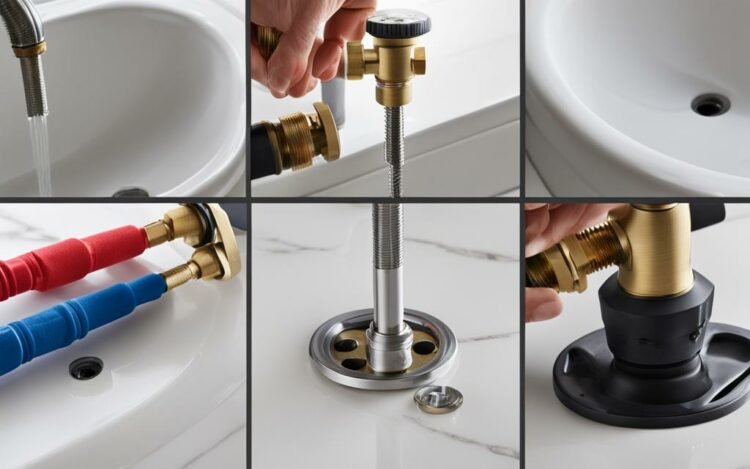Are you considering installing a new bathroom faucet? Before you start this DIY project, it’s important to weigh the pros and cons of doing it yourself versus hiring a professional plumber. In this section, we will explore the factors to consider when deciding whether to tackle the installation yourself or enlist the help of a professional.
Installing a bathroom faucet may seem like a straightforward task, but it can quickly become complicated if you don’t have the necessary skills and experience. While DIY installation may save you money upfront, it could potentially lead to issues and costly repairs down the line.
By hiring a professional plumber, you can ensure that the installation is done correctly and efficiently. A professional will have the expertise to handle any challenges that may arise during the installation process and will be able to provide guidance on choosing the right faucet for your specific plumbing needs.
Before you make a decision, let’s take a closer look at the signs that indicate the need for a new bathroom faucet and the potential problems that can arise with a DIY installation.
Key Takeaways:
- DIY faucet installation may save money upfront, but it can lead to complications and costly repairs in the long run.
- Hiring a professional plumber ensures proper installation and peace of mind.
- Signs that indicate the need for a new bathroom faucet include persistent leaks, corrosion, and a desire for an aesthetic upgrade.
- Potential problems with DIY faucet installation include improper piping connections and difficulty fitting the new faucet.
- Choosing the right faucet is crucial to ensure compatibility with existing plumbing and desired functionality.
Signs that indicate the need for a new bathroom faucet
Before deciding whether to replace your bathroom faucet, it’s important to know when it’s time for a change. There are several signs that indicate the need for a new faucet. One common sign is persistent leaks that cannot be fixed, no matter how many times you try to tighten the connections. Leaky faucets not only waste water but can also lead to water damage and mold growth.
Another sign that it’s time to replace your bathroom faucet is corrosion and wear. Over time, faucets can become rusty or develop unsightly stains. Additionally, if the handle is loose or the faucet is difficult to operate, it may be time for a replacement. Aesthetic preferences can also be a valid reason for wanting to upgrade your faucet. If you’re looking to refresh the look of your bathroom, installing a new faucet can make a significant difference.
Signs that indicate the need for a new bathroom faucet:
- Persistent leaks that cannot be fixed
- Corrosion and wear
- Loose handle or difficult operation
- Desire for an aesthetic upgrade
If you’re experiencing any of these signs, it’s time to consider replacing your bathroom faucet. Doing so will not only improve the functionality and appearance of your bathroom but also prevent potential water damage and costly repairs in the future.
Saving Tip: Planning a bathroom renovation and looking for ways to save on your Bathroom Faucets or Shower Systems? Before finalizing your purchase, take a moment to explore available discounts and deals, such as the enticing Lefton deals, which can offer substantial savings on high-quality fixtures.
Potential problems with DIY faucet installation
While DIY plumbing projects can be satisfying and cost-effective, it’s important to be aware of the potential problems that can arise when installing a bathroom faucet yourself. Here are some common issues to watch out for:
- Improper piping connections: Connecting the pipes incorrectly can lead to leaks and water damage. It requires precise knowledge of plumbing systems and proper techniques to ensure a secure and watertight connection.
- Incorrect tool usage: Using the wrong tools or not using them properly can damage the faucet or cause it to malfunction. It’s crucial to have the right tools and know how to use them correctly to avoid costly mistakes.
- Difficulty fitting the new faucet: Existing holes in the sink or countertop may not align perfectly with the new faucet, requiring modifications or adjustments. Poorly fitted faucets can lead to leaks and instability, compromising the overall functionality of the fixture.
- Lack of expertise: Plumbing systems can be complex, and without proper knowledge and experience, it’s easy to overlook important details or make critical errors during the installation process. This can result in leaks, water damage, and the need for emergency repairs.
While it’s tempting to save money by installing a bathroom faucet yourself, it’s essential to weigh the potential risks and complications that can arise. If you’re unsure of your plumbing skills or the complexity of the installation, it’s best to hire a professional plumber who has the expertise to ensure a successful and problem-free installation.
Factors to Consider When Choosing a Faucet
When it comes to choosing a faucet for your bathroom, there are several important factors to consider. Making the right choice will ensure a successful installation and a functional and aesthetically pleasing addition to your bathroom.
1. Compatibility with Existing Plumbing: One of the most crucial factors to consider is the compatibility of the faucet with your existing plumbing system. Take note of the number of mounting holes in your sink or countertop and choose a faucet that matches. Additionally, consider the size and shape of the faucet to ensure it fits properly and doesn’t interfere with any other fixtures or accessories.
2. Design and Aesthetic: The design and aesthetic of the faucet play a significant role in the overall look and feel of your bathroom. Consider the style, finish, and shape of the faucet, as well as how it aligns with the overall design theme of your bathroom. Whether you prefer a sleek and modern look or a more traditional and ornate design, there are numerous options available to suit your personal taste.
3. Functionality: Different faucets offer various functionalities that can enhance your bathroom experience. Consider if you require a single-handle or dual-handle faucet, as well as any additional features such as a pull-out sprayer, touchless operation, or temperature control options. Identifying the specific functionalities you need will help you narrow down your choices and find the most suitable faucet for your needs.
Choosing a Professional Plumber for Expert Advice
With so many factors to consider, it can be overwhelming to choose the right faucet for your bathroom. That’s where a professional plumber can provide valuable guidance. They have the expertise and knowledge to assess your existing plumbing system and help you choose a faucet that is compatible and meets your specific needs. Their expertise will ensure a smooth installation process without any complications or mismatched fittings.
By considering factors such as compatibility, design, and functionality, and seeking the advice of a professional plumber, you can make an informed decision when choosing a faucet for your bathroom. Taking the time to choose the right faucet will result in a functional, visually appealing, and durable addition to your bathroom.
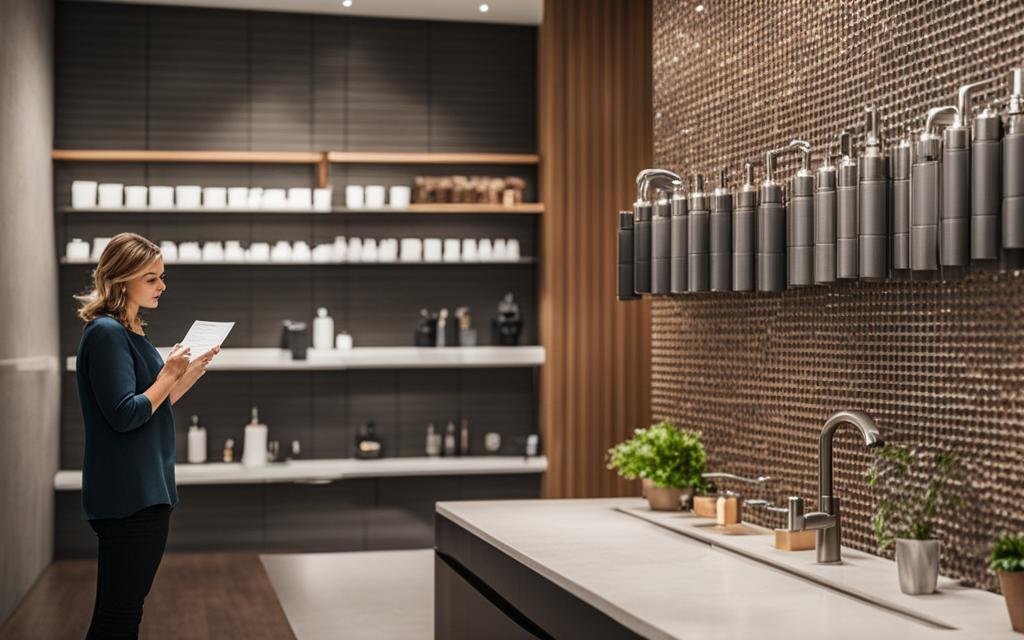
Average costs of bathroom faucet installation
When it comes to installing a new bathroom faucet, it’s important to consider the associated costs. The overall cost of installation will depend on various factors, including the type of faucet and the room in which it is being installed. Let’s take a closer look at the average costs you can expect for different types of faucets and rooms.
Bathroom Sink Faucets:
- Standard sink faucets can range from $25 to $2,500.
- Higher-end options like high-arch faucets or pull-out faucets typically range from $50 to $2,500.
Bathtub Faucets:
- Bathtub faucets can vary considerably in price, starting from around $35 and going up to $3,500.
Shower Faucets:
- The average cost of shower faucets is between $25 and $3,000.
Outdoor and Utility Room Faucets:
- Outdoor and utility room faucets generally fall in the range of $25 to $500.
Please note that these average costs are based on general market trends and may vary depending on your location and other factors specific to your project. It’s always advisable to consult with a professional plumber to get an accurate estimate for your bathroom faucet installation.
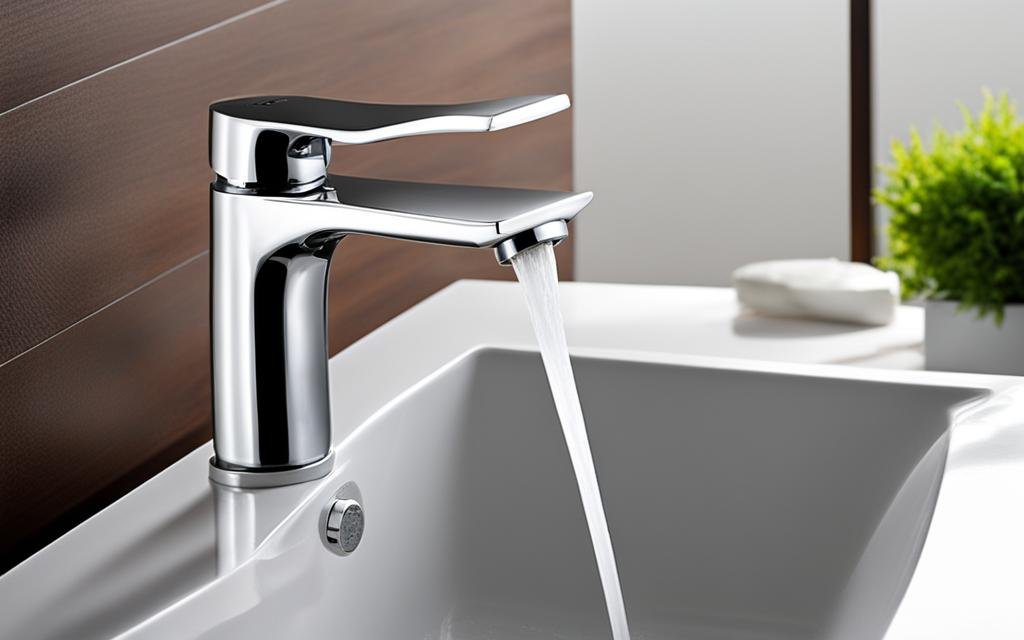
Factors that Affect Faucet Costs
When it comes to installing a new faucet, there are several factors that can impact the overall cost. Understanding these factors can help you make an informed decision and budget accordingly. Here are some key factors to consider:
Faucet Style:
The style of the faucet you choose can have a significant impact on the cost. Basic single-handle faucets tend to be more affordable, starting at around $25, while high-end dual-handle faucets can cost up to $1,000. Consider your budget and personal preferences when selecting a faucet style.
Additional Features:
If you’re looking for added convenience or functionality, you may opt for faucets with additional features. These can include built-in filtration systems, touchless technologies, or adjustable spray settings. Keep in mind that each added feature will increase the cost of the faucet, ranging from an extra $100 to $1,000.
Material Prices:
The material of the faucet can also affect the cost. Chrome-finish faucets are more budget-friendly, averaging around $40, while copper-finish faucets are generally pricier, with an average cost of around $180. Consider your desired aesthetic and budget when deciding on the material of your faucet.
Permits:
In some cases, obtaining permits may be required for major plumbing remodels that involve faucet installation. The cost of permits can range from $50 to $450, depending on your location and the scope of the project. It’s important to check with your local authorities to determine if permits are necessary and factor in the associated costs.
By considering these factors, you can better estimate the cost of your faucet installation project and make an informed decision that suits your budget and preferences.
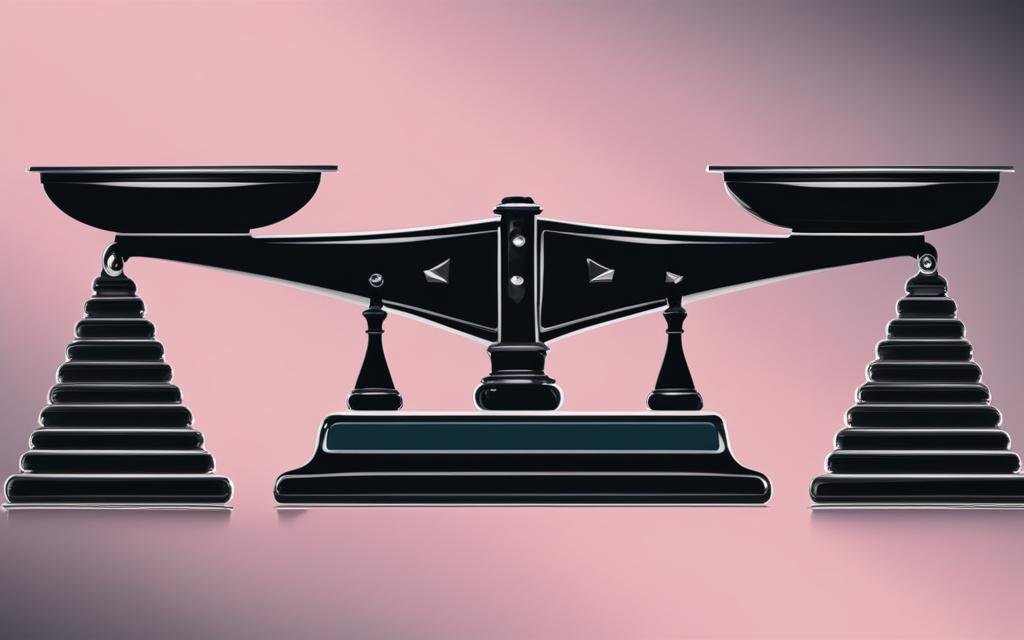
When to Consider Replacing a Faucet
If you’ve had your faucet for a while, it’s important to know when it’s time to consider a replacement. Over time, faucets can wear out and develop issues that affect their performance and appearance. Here are some signs that indicate it may be time to replace your faucet:
- Leaking: If your faucet is consistently leaking, even after attempting repairs, it may be a sign of internal damage that requires replacement. Persistent leaks can waste water and lead to increased water bills.
- Weakened Water Flow: If you notice a decrease in water pressure or a weak flow from your faucet, it may be a result of mineral buildup or a faulty valve. Replacing the faucet can help restore optimal water flow.
- Outdated Design: If your faucet’s design is outdated and doesn’t match the aesthetics of your bathroom anymore, replacing it can give your bathroom a fresh and modern look.
- Rusting: Rust can develop on faucets over time, especially if they’re made of lower-quality materials. Not only does rust detract from the appearance of your faucet, but it can also affect its functionality. It’s best to replace a faucet that is showing signs of rust.
By paying attention to these signs, you can determine when it’s time to replace your faucet and avoid further issues down the line. When replacing your faucet, it’s recommended to consult with a professional plumber to ensure a proper installation and to choose a faucet that suits your needs and preferences.
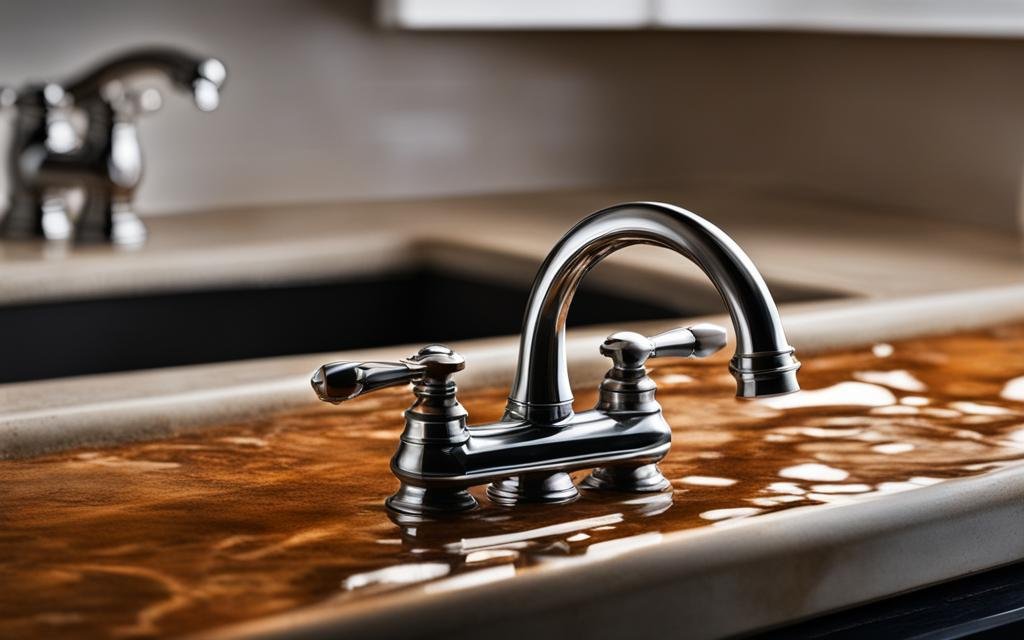
Consulting with a Professional
Replacing a faucet may seem like a simple task, but it can become complicated if you encounter unforeseen challenges during the installation process. Hiring a professional plumber ensures that the replacement is done correctly and efficiently, saving you time and potential headaches. They have the knowledge and experience to address any plumbing issues that may arise and can recommend high-quality faucets that are compatible with your existing plumbing system. Additionally, a professional plumber can provide guidance on faucet options that meet your budget and personal style preferences.
When it comes to faucet replacement, it’s important to make an informed decision based on the condition and functionality of your current faucet. By recognizing the signs of wear and considering the benefits of professional assistance, you can ensure a smooth and successful faucet replacement process.
Conclusion
When it comes to bathroom faucet installation, hiring a professional plumber offers several benefits. While the allure of a DIY project may be tempting, it is crucial to consider the potential complications and additional costs that can arise. By opting for professional installation, you ensure a proper and efficient installation process.
One of the main advantages of hiring a professional plumber is their expertise in the field. They have the knowledge and experience to handle any plumbing issues that may arise during the installation. With their skills, they can navigate potential challenges and avoid common pitfalls that could lead to leaks or further damage to your plumbing system.
Another advantage of professional installation is the time and effort it saves you. Installing a bathroom faucet yourself can be time-consuming, especially if you’re not familiar with the process. By hiring a professional, you can focus on other tasks while they handle the installation swiftly and efficiently.
Furthermore, hiring a professional plumber gives you peace of mind. You can rest assured knowing that the installation is being done correctly, minimizing the risk of future problems and costly repairs. Additionally, professional plumbers often offer warranties on their work, providing an extra layer of protection for your investment in a new faucet.

